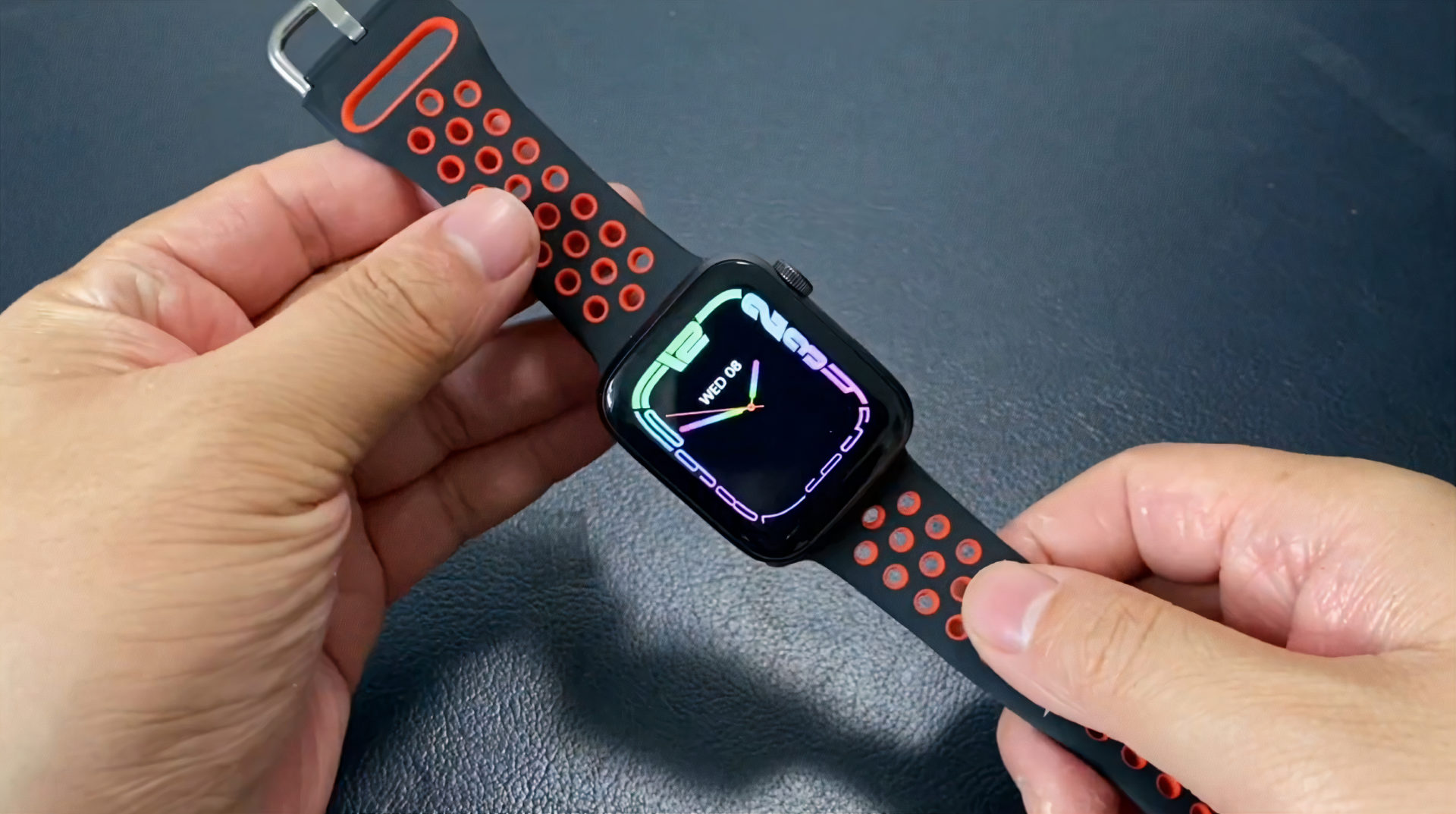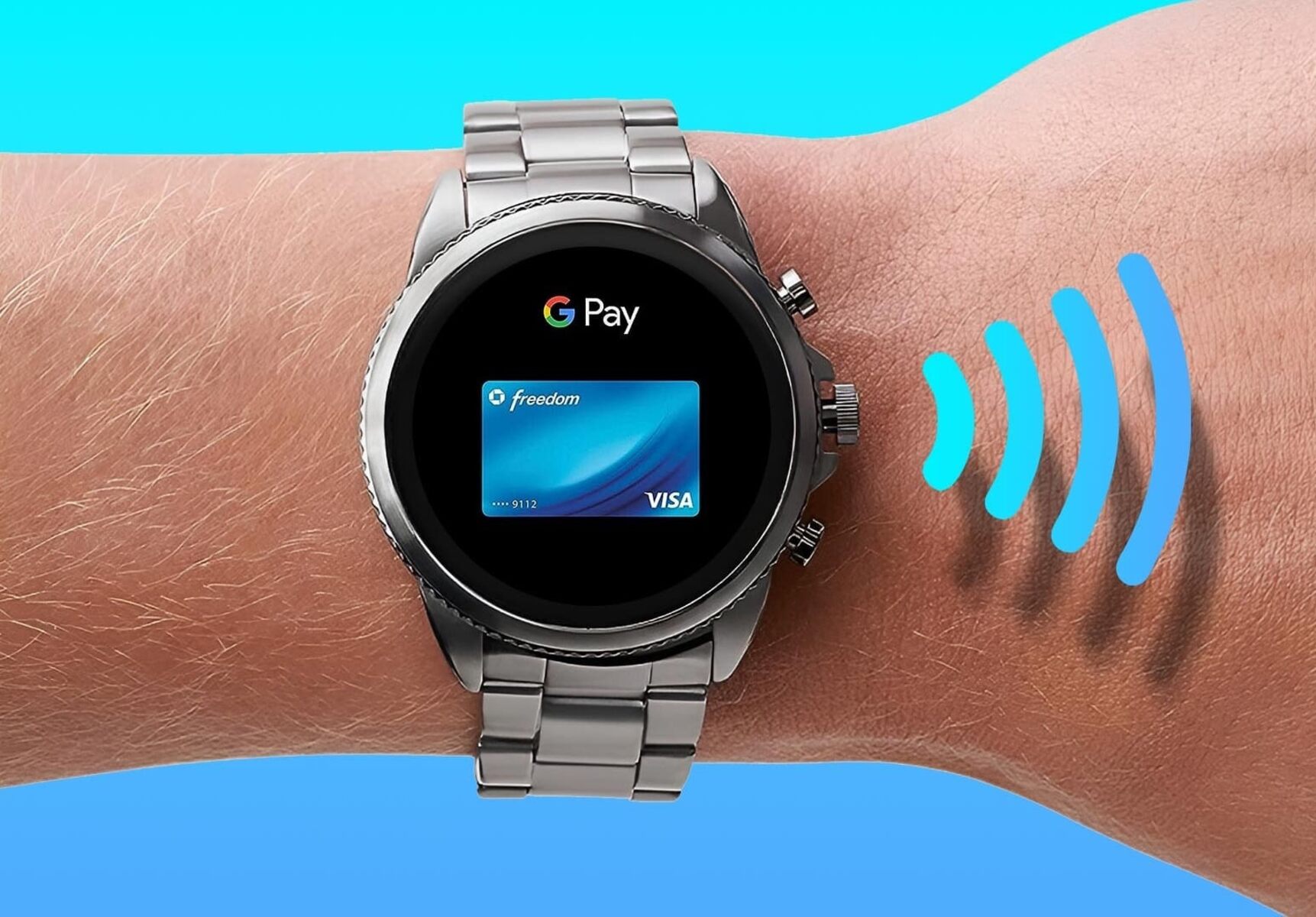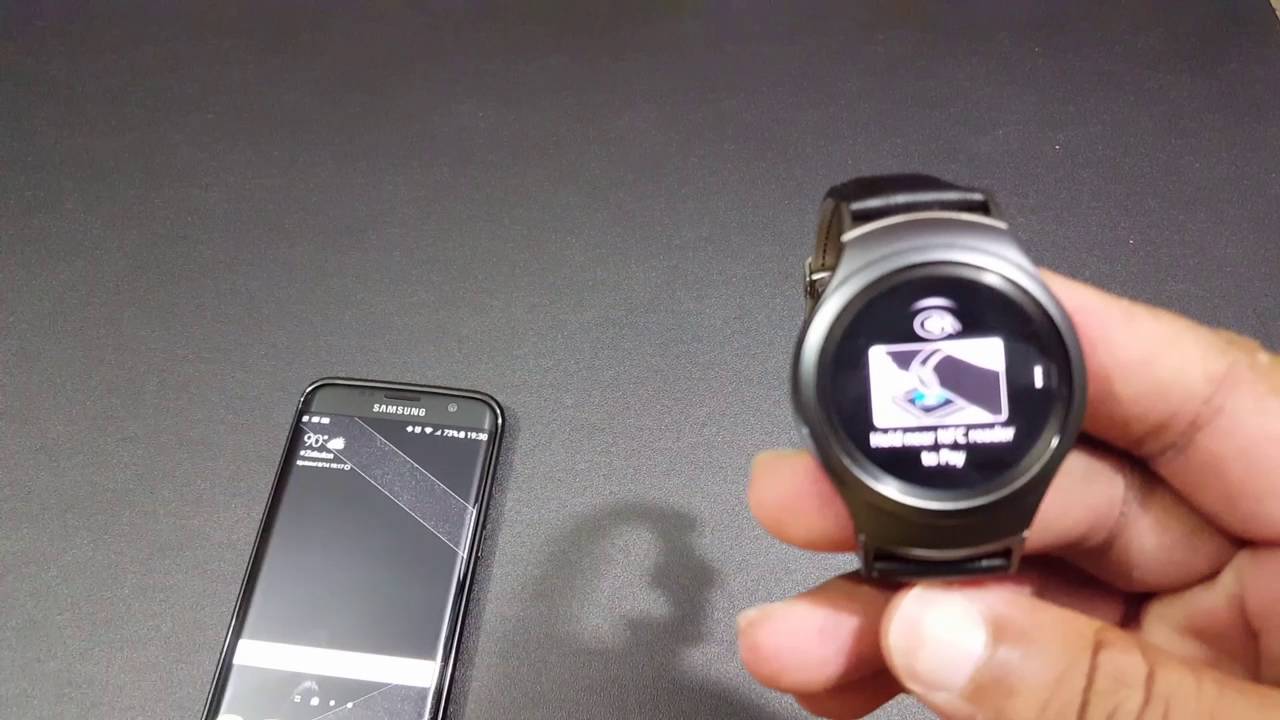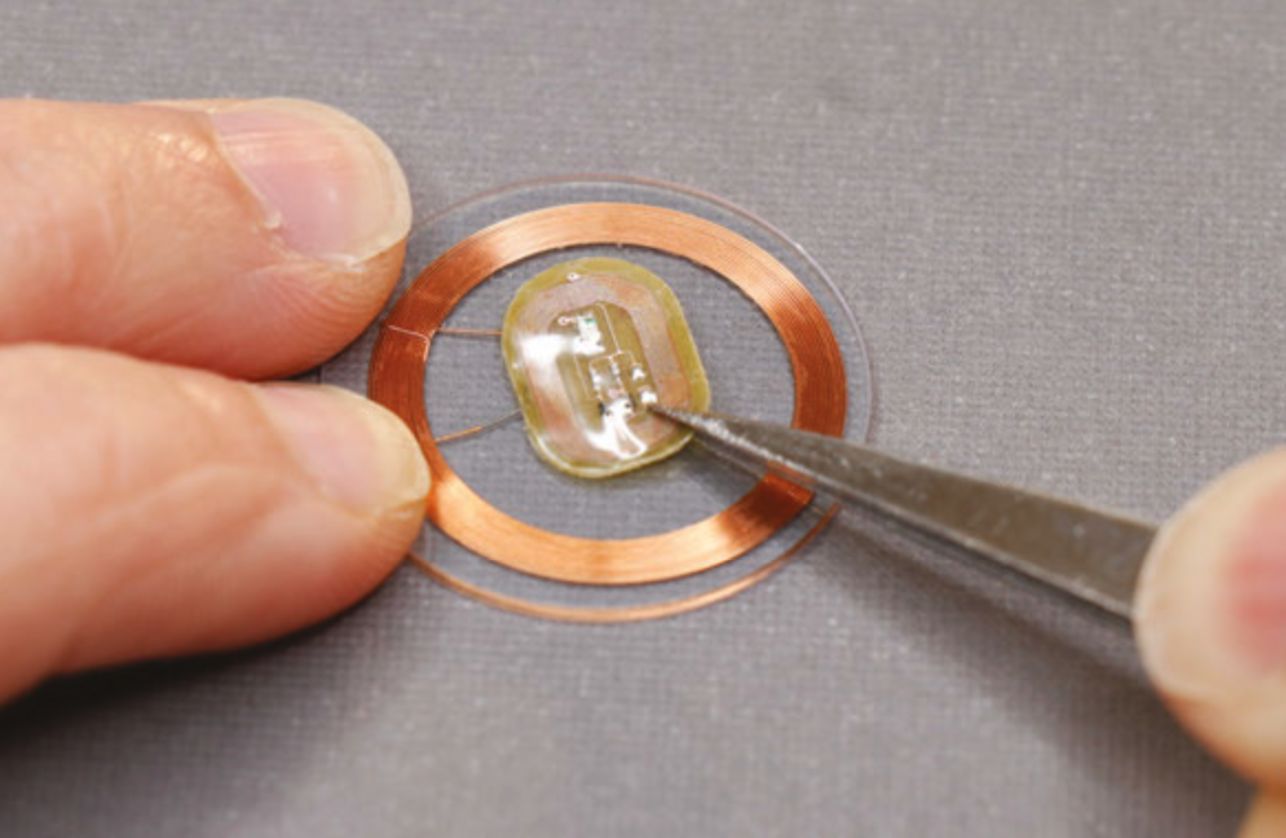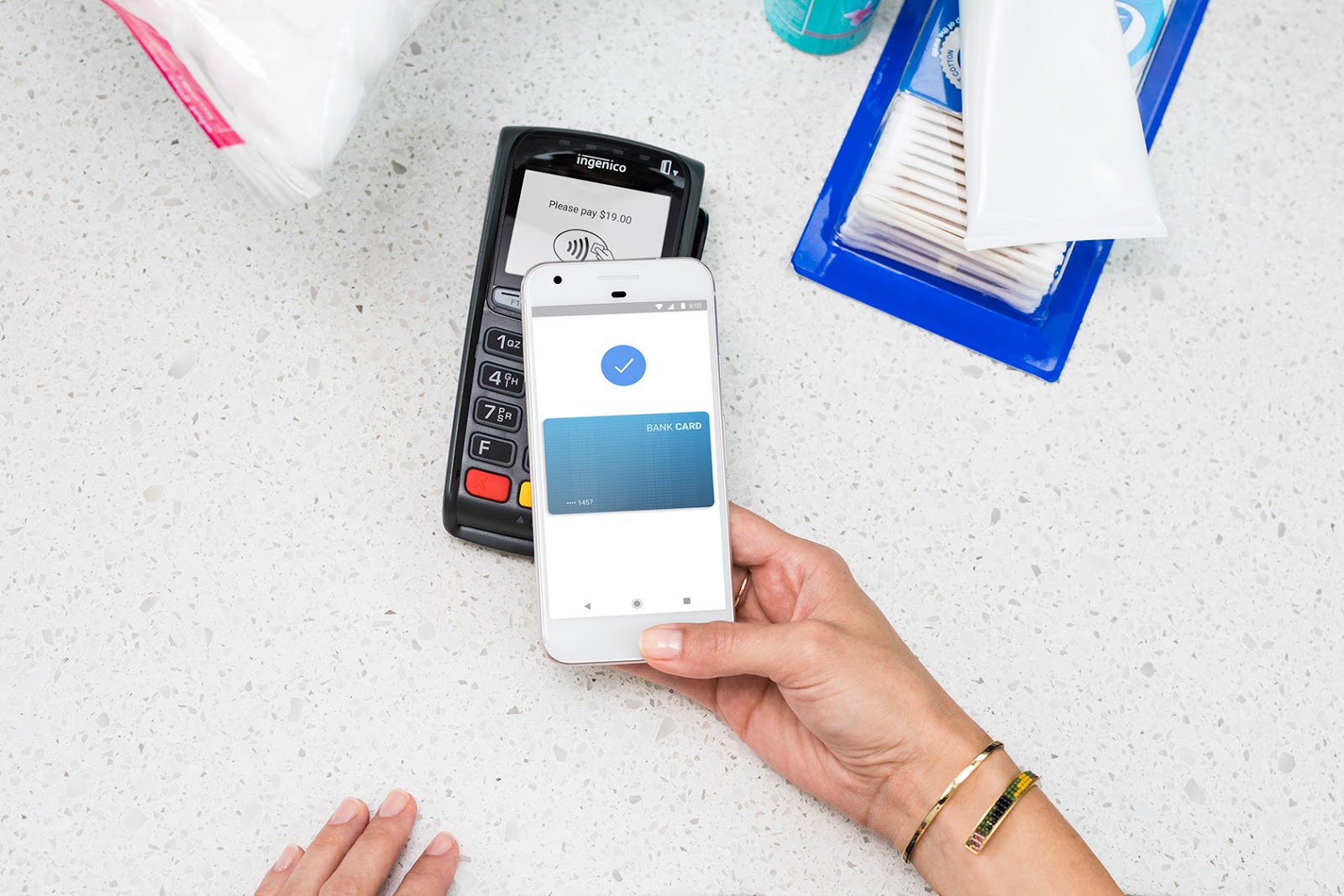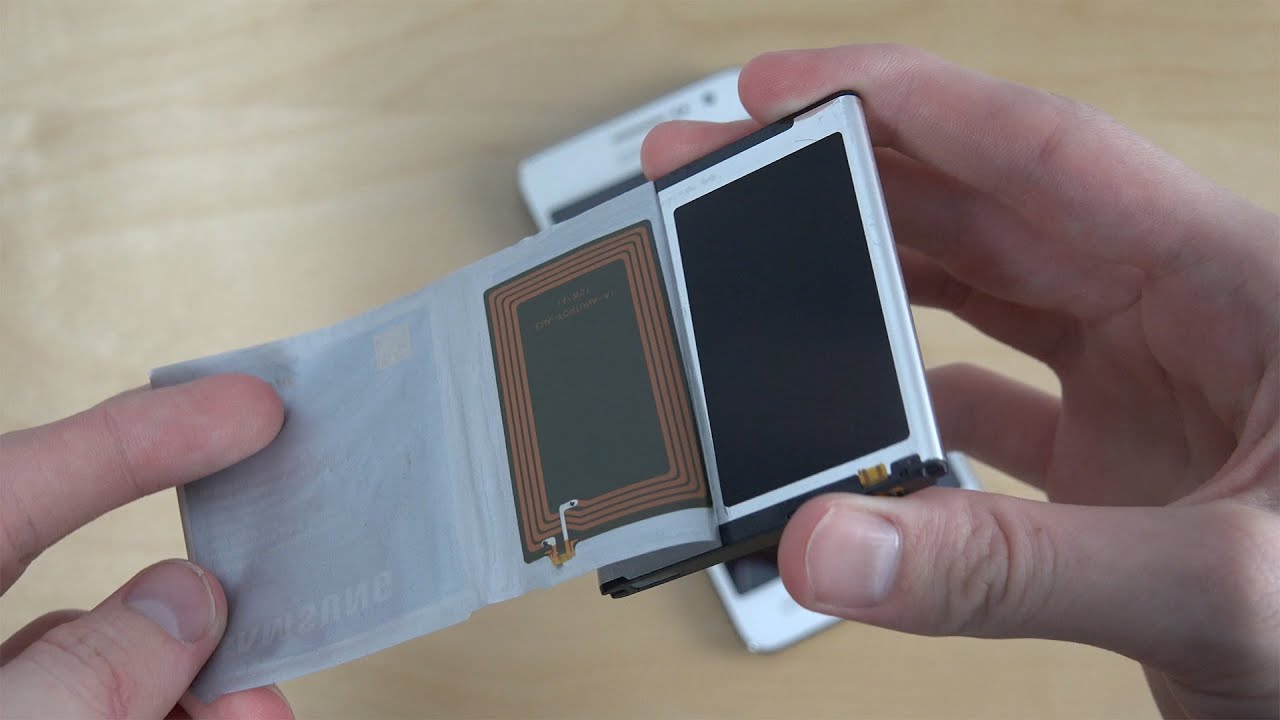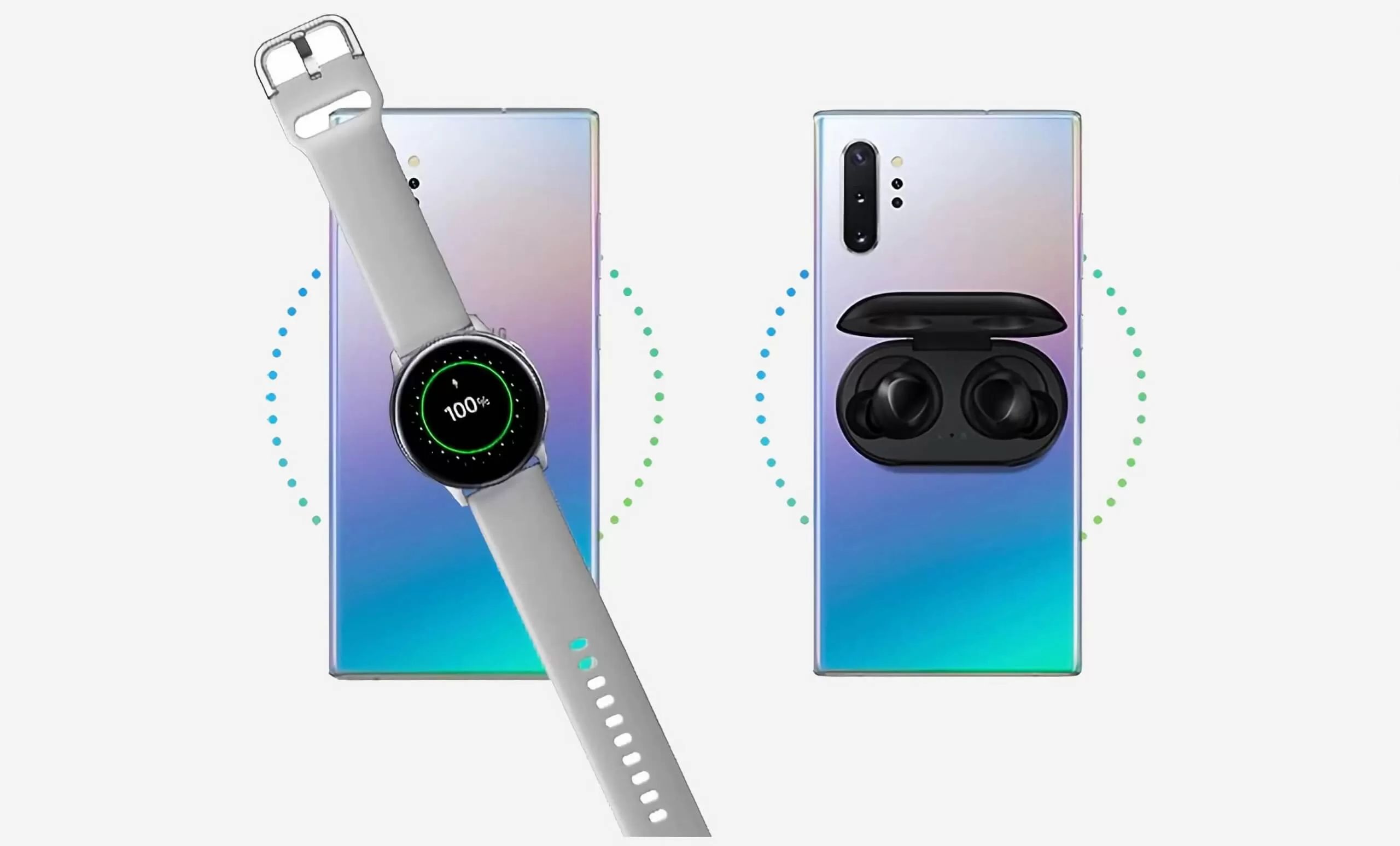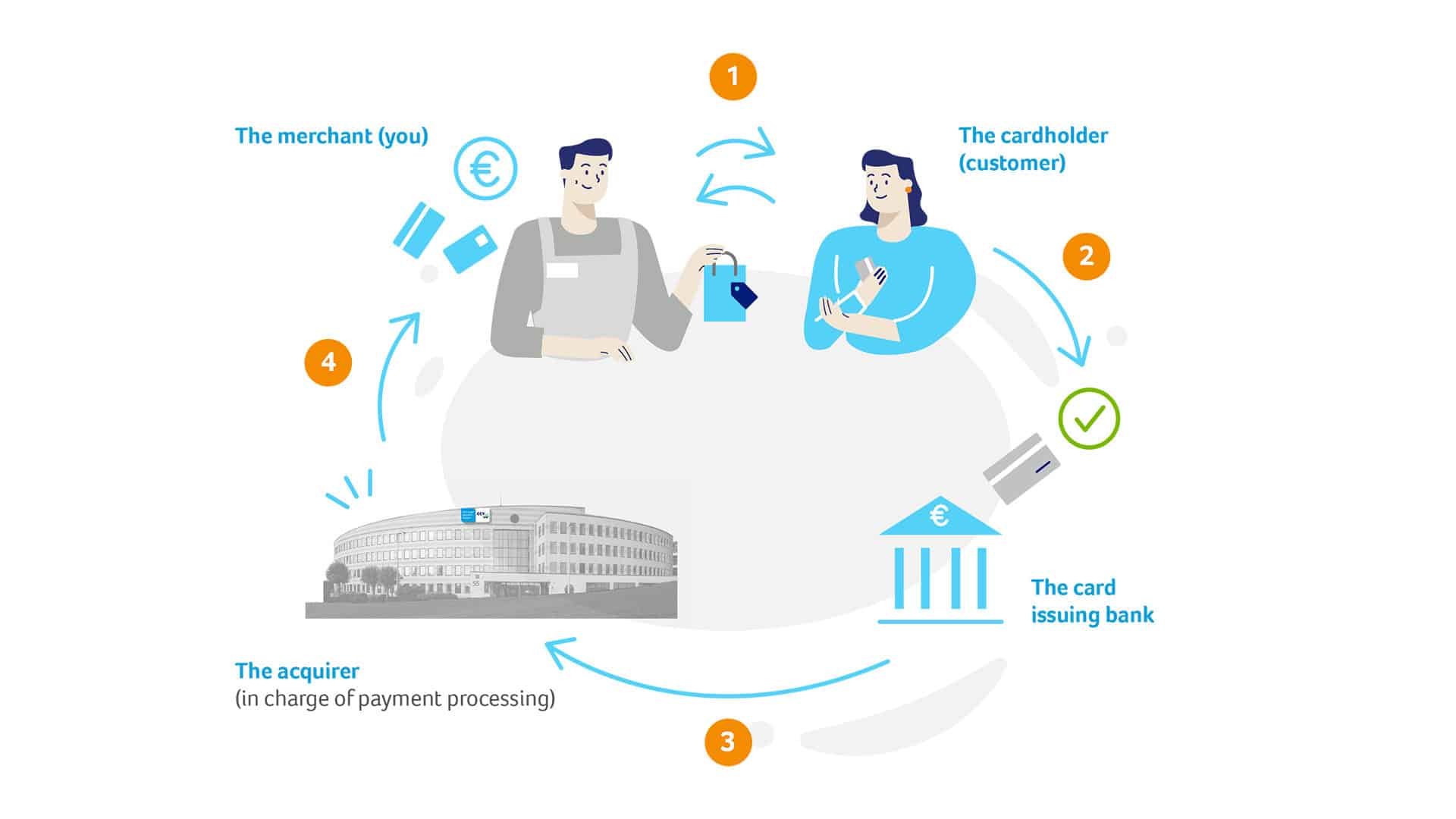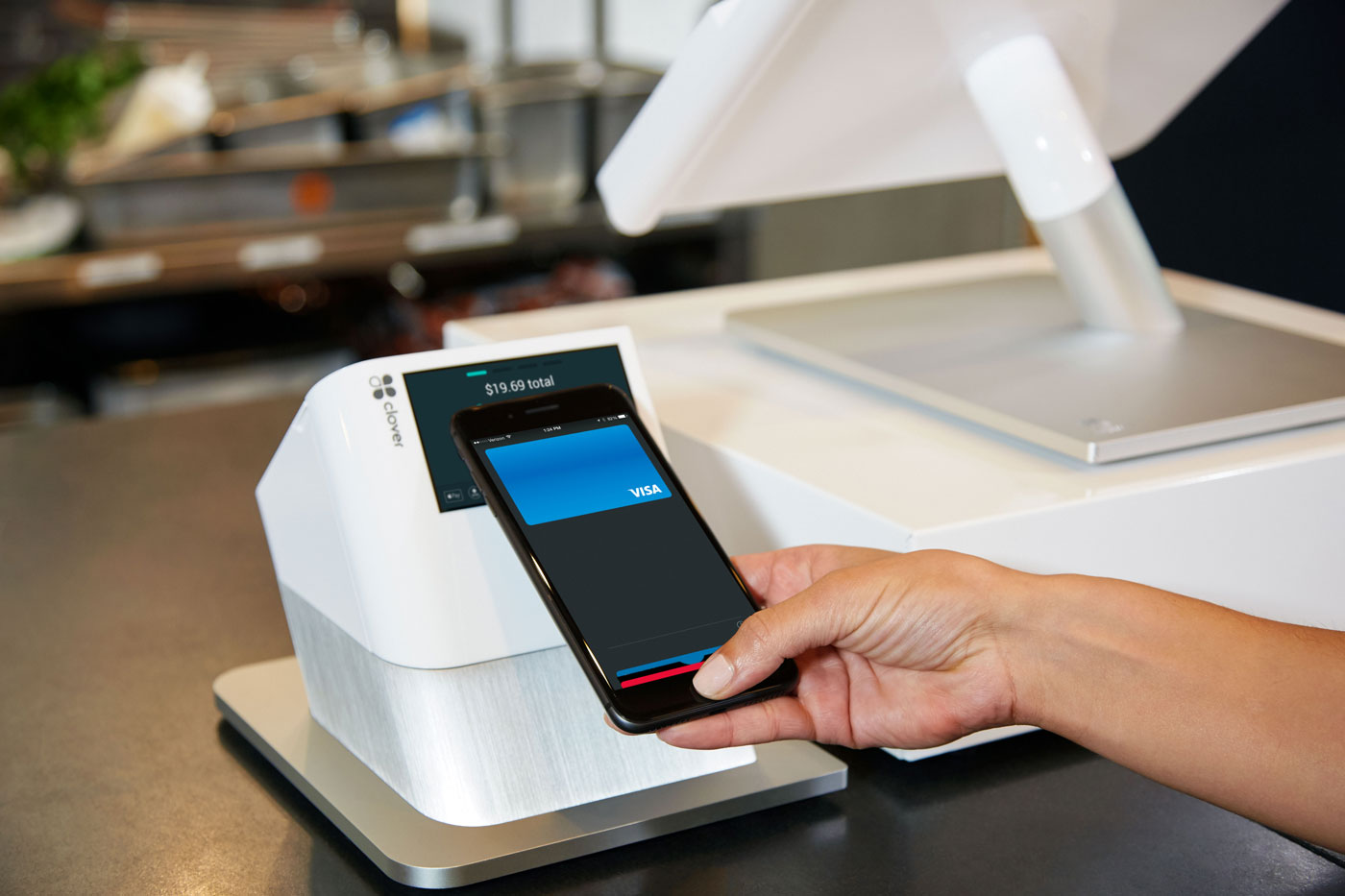Introduction
Welcome to the world of smartwatches, where technology seamlessly integrates into our everyday lives. One of the features that you may have heard about is Near Field Communication, or NFC. NFC has become increasingly popular, but what exactly is it? How does it work? And why is it important for smartwatches?
NFC is a short-range wireless communication technology that allows devices to transmit data over a short distance by simply bringing them close together. It enables quick and effortless communication between devices without the need for complex setup processes or physical connections.
With the rise of smartwatches, NFC has found its way into these wearable devices, adding a range of convenient functionalities. Smartwatches equipped with NFC technology can perform various tasks by simply tapping or holding them near NFC-enabled devices or objects.
In this article, we will delve into the world of NFC on smartwatches. We will explore how NFC works, its benefits, how to use it on your smartwatch, compatible devices, and security considerations. So, if you’re curious about NFC and how it enhances the capabilities of your smartwatch, let’s dive right in!
What Is NFC?
NFC, or Near Field Communication, is a short-range wireless communication technology that allows devices to exchange data by bringing them close together. It operates on radio frequency identification (RFID) technology, providing a convenient and secure way to transfer information between compatible devices, such as smartphones, tablets, and smartwatches.
Unlike Bluetooth or Wi-Fi, which require a more complex network setup, NFC relies on electromagnetic fields to establish a connection. NFC-enabled devices can be quickly paired by simply touching them or bringing them within a few centimeters of each other.
NFC primarily operates in two modes: passive and active. In passive mode, one device, known as the initiator, generates the RF field, while another device, called the target, responds to the field. In active mode, both devices generate and respond to the RF field.
One of the unique aspects of NFC is its ability to support three distinct communication modes: peer-to-peer mode, reader/writer mode, and card emulation mode.
In peer-to-peer mode, NFC-enabled devices can exchange data directly between each other. This mode is commonly used for sharing contacts, files, photos, and even initiating financial transactions.
The reader/writer mode allows NFC-enabled devices to interact with other compatible tags or smart cards. This mode is often utilized for tasks like reading NFC-enabled posters, accessing public transportation cards, or making payments.
Lastly, the card emulation mode allows an NFC-enabled device, such as a smartphone or smartwatch, to act as a contactless smart card. This mode enables users to make payments or access secured areas by simply tapping their device against a card reader.
In summary, NFC is a wireless communication technology that enables quick and easy data transfer between compatible devices. Its simplicity, convenience, and versatility have made NFC an integral part of various technologies, including smartwatches.
NFC on Smartwatches: Explained
Smartwatches with NFC capabilities have revolutionized the way we interact with our wearable devices. NFC technology on smartwatches allows users to perform a wide range of actions by simply tapping or holding their device near an NFC-enabled object or device.
When it comes to smartwatches, NFC is primarily used for contactless payments, accessing digital tickets or boarding passes, and transferring small amounts of data. By integrating NFC into smartwatches, manufacturers have made these wearables even more convenient and versatile.
With NFC-enabled smartwatches, making payments has become effortless. By storing your card details securely on your smartwatch, you can make contactless payments at supported retailers simply by tapping your wrist against the payment terminal. This eliminates the need to carry wallets or smartphones, providing a quick and secure way to make transactions.
In addition to payments, NFC on smartwatches allows for seamless access to digital tickets and boarding passes. Whether you’re attending a concert, boarding a plane, or accessing public transportation, simply tapping your smartwatch against the designated NFC readers can provide you with instant access to your tickets, without the hassle of printing or searching for e-tickets on your smartphone.
Furthermore, smartwatches with NFC capabilities can also be used for data transfer purposes. For example, by tapping your NFC-enabled smartwatch against another supported device, you can quickly share contact information, small files, or URLs. This functionality is particularly useful when you want to exchange information with someone without the need for typing or scanning QR codes.
It’s important to note that NFC on smartwatches may vary in terms of capabilities and supported features. While some smartwatches offer full NFC functionality, others may have limited features or specific compatibility requirements. It’s essential to check the specifications and features of your smartwatch to ensure it supports the NFC capabilities you desire.
In summary, NFC on smartwatches has transformed the way we interact with wearable devices. Its support for contactless payments, ticket access, and data transfer has made smartwatches even more convenient and versatile. Whether you’re making a purchase, accessing digital tickets, or quickly sharing information, NFC on smartwatches provides a seamless and efficient experience.
Benefits of NFC on Smartwatches
The integration of NFC technology into smartwatches brings a multitude of benefits to users, enhancing convenience, security, and versatility of these wearable devices. Let’s explore some of the key advantages of having NFC on your smartwatch.
1. Contactless Payments: NFC-enabled smartwatches allow for quick and effortless contactless payments. By storing your card information securely on your smartwatch, you can make purchases with a simple tap of your wrist. This eliminates the need to carry physical wallets or smartphones, streamlining the payment process and enhancing convenience.
2. Ticket and Pass Access: With NFC on your smartwatch, accessing digital tickets, boarding passes, and transportation cards becomes a breeze. By tapping your watch against appropriate NFC readers, you can gain instant access to events, flights, or public transportation, eliminating the need for printed tickets or searching through your smartphone for e-tickets.
3. Data Transfer: NFC allows for seamless data transfer between devices. By tapping your NFC-enabled smartwatch against another compatible device, you can quickly share contact information, small files, URLs, and more. This feature is especially useful for networking, sharing information with colleagues, or exchanging content without the need for additional steps.
4. Convenience on-the-go: Having NFC on your smartwatch enhances overall convenience while on the move. Whether you need to pay for a coffee, enter a secure area, or access your digital identification, a quick tap of your smartwatch can provide the necessary information or authorization, saving time and effort.
5. Enhanced security: NFC-based transactions on smartwatches are highly secure. Each transaction is encrypted and requires authentication, ensuring that your sensitive information remains protected. Additionally, with NFC, you have more control over your transactions since the transaction can only occur when you physically tap or hold your smartwatch against the payment terminal or reader.
6. Versatility and Future Potential: NFC technology on smartwatches offers versatility beyond payments and ticket access. As the technology continues to evolve, we can expect to see more innovative use cases, such as unlocking smart locks, controlling home appliances, or interacting with public services. This versatility opens up a world of possibilities for integrating smartwatches into various aspects of our daily lives.
In summary, NFC on smartwatches brings a range of benefits, including effortless contactless payments, quick ticket access, convenient data transfer, enhanced security, and future potential for new use cases. With NFC-enabled smartwatches, you can simplify transactions, have instant access to important information, and enjoy the convenience and versatility that this technology offers.
How to Use NFC on Your Smartwatch
Using NFC on your smartwatch is a straightforward process that allows you to make payments, access tickets, and transfer data with ease. Here are the steps to effectively use NFC on your smartwatch:
1. Enable NFC: Begin by ensuring that NFC is enabled on your smartwatch. Go to the settings menu of your smartwatch and look for the NFC option. Toggle the switch to enable NFC functionality.
2. Add Payment Cards: If you plan to use your smartwatch for contactless payments, you need to add your payment cards. Open the dedicated payment app on your smartwatch or the paired smartphone app, and follow the instructions to add your credit or debit card information securely. Some smartwatches may require you to authenticate the card addition using additional security measures.
3. Make Payments: To make payments using NFC on your smartwatch, proceed to a supported payment terminal. Ensure that NFC is enabled on the payment terminal as well. Hold your smartwatch near the payment terminal, and it will initiate the transaction. Follow any additional instructions on the screen of the payment terminal, such as entering a PIN or using your biometric authentication.
4. Access Tickets or Passes: For ticket or pass access, ensure that the necessary app or service is installed on your smartwatch. Open the app or service and navigate to the specific ticket or pass you want to access. When at the designated NFC reader, hold your smartwatch near it, and it will communicate the necessary information to gain you access. Follow any additional instructions provided, such as rotating or tapping the watch face against the reader.
5. Transfer Data: To transfer data between NFC-enabled devices, ensure that both devices have NFC enabled. Open the app or service on your smartwatch that you wish to share from or receive data through. Make sure that the corresponding app or service is open on the other device as well. Bring the devices close to each other, ensuring that their NFC antennas come into contact. You may need to accept or confirm the data transfer prompt on both devices.
6. Explore Additional NFC Features: Take the time to explore other NFC features and capabilities that may be available on your smartwatch. This could include compatibility with other smart devices, unlocking NFC-enabled locks, or connecting to public service interfaces. Familiarize yourself with any documentation or guides provided by the smartwatch manufacturer to take full advantage of the NFC features.
In summary, to use NFC on your smartwatch, ensure it is enabled, add your payment cards if needed, make payments by holding it near NFC-enabled payment terminals, access tickets or passes by holding it near NFC readers, transfer data by bringing NFC-enabled devices close to each other, and explore any additional NFC features your smartwatch may offer. With these simple steps, you can fully utilize the NFC capabilities of your smartwatch and enjoy its convenience and versatility.
Compatible Devices
When it comes to NFC on smartwatches, compatibility is an important consideration. Not all smartwatches have NFC capabilities, and those that do may have varying levels of functionality and support. It’s essential to know which devices are compatible with NFC to ensure a seamless experience. Here are some popular smartwatches that support NFC:
1. Apple Watch: The latest generations of Apple Watches, including Series 3, Series 4, Series 5, and newer models, come equipped with NFC capabilities. These watches support Apple Pay, allowing you to make contactless payments with supported retailers.
2. Samsung Galaxy Watch: The Samsung Galaxy Watch series, including the Galaxy Watch Active, Galaxy Watch Active 2, Galaxy Watch 3, and newer models, feature NFC technology. These watches are compatible with Samsung Pay, which enables contactless payments using your wrist.
3. Fitbit Versa: Fitbit Versa smartwatches, including the Versa 2 and Versa 3 models, offer NFC capabilities. They support Fitbit Pay, allowing for convenient and secure contactless payments at supported retailers.
4. Garmin Smartwatches: Several Garmin smartwatch models feature NFC functionality. Examples include the Garmin Vivoactive 3 and Vivoactive 4 series, Fenix 6 series, and Forerunner 245 Music. These watches support Garmin Pay, enabling contactless payments on the go.
5. Wear OS Smartwatches: Wear OS, Google’s operating system designed for wearable devices, powers a range of smartwatches from various manufacturers. Some Wear OS smartwatches, such as the TicWatch Pro series and Fossil Gen 5 series, offer NFC capabilities for contactless payments.
It’s important to note that the availability and functionality of NFC on smartwatches may vary based on the region and specific models. Additionally, compatibility with payment services may differ, depending on the country and the supported financial institutions.
Before purchasing a smartwatch for NFC functionality, ensure that it explicitly mentions NFC support in the specifications. It’s also a good idea to check the manufacturer’s website or contact customer support to confirm the NFC capabilities of the desired model.
In summary, several popular smartwatch brands and models offer NFC capabilities, including Apple Watch, Samsung Galaxy Watch, Fitbit Versa, Garmin smartwatches, and various Wear OS devices. However, it’s essential to check the specific model’s compatibility and NFC support to ensure a seamless and enjoyable NFC experience with your smartwatch.
Security Concerns with NFC on Smartwatches
NFC technology on smartwatches brings added convenience and functionality, but it’s important to be aware of potential security concerns. While NFC transactions on smartwatches are generally secure, it’s essential to understand the risks and take necessary precautions. Here are some common security concerns associated with NFC on smartwatches:
1. Unauthorized Access: One of the primary concerns with NFC is the potential for unauthorized access to sensitive data. If someone gains physical access to your smartwatch, they could potentially make unauthorized payments or access personal information stored within the device.
2. Data Interception: NFC communication occurs over a short range, but it’s still possible for a malicious individual to intercept data during the transmission. This can be mitigated by ensuring that NFC transactions are encrypted and using trusted and secure payment services.
3. Device Cloning: NFC-enabled smartwatches contain unique identifiers that can be cloneable or tampered with if proper security measures are not in place. This can result in the creation of duplicate devices that can make unauthorized transactions or access sensitive information.
4. Reader Tampering: NFC readers, such as those found at payment terminals, can be tampered with by criminals to collect data from unsuspecting users. It’s important to be vigilant and only use trusted and secure payment terminals for NFC transactions.
5. Phishing Attacks: Criminals may attempt to deceive smartwatch users into making unauthorized transactions through phishing attacks. These attacks can involve spoofing payment terminal interfaces or sending fake payment requests to the user’s device. It’s crucial to only respond to legitimate payment requests from trusted sources.
To mitigate these security concerns, here are some best practices to follow when using NFC on your smartwatch:
– Enable Security Measures: Set up appropriate security measures such as device passcodes, biometric authentication, or PIN verification for NFC transactions on your smartwatch.
– Regularly Update Firmware: Keep your smartwatch’s firmware up to date to ensure that any security vulnerabilities are patched by the manufacturer.
– Use Trusted Payment Services: Use reputable and trusted payment services for NFC transactions on your smartwatch. These services undergo rigorous security testing and implement measures to protect your data.
– Be Mindful of Your Device: Keep physical control of your smartwatch at all times and be cautious when lending it to others. Consider using security features such as remote locking or wiping in case the device is lost or stolen.
– Review Transactions Regularly: Monitor your transaction history regularly to identify any unauthorized activity. If you notice any suspicious transactions, contact your bank or payment service provider immediately.
By following these security practices, you can use NFC on your smartwatch confidently while minimizing the risks associated with unauthorized access and data theft.
In summary, while NFC on smartwatches offers a convenient way to make payments and access services, it’s important to be vigilant about security. By taking necessary precautions and following best practices, you can enjoy the benefits of NFC on your smartwatch while ensuring the safety of your data and transactions.
Conclusion
NFC technology on smartwatches has unquestionably revolutionized the way we interact with wearable devices. With the ability to make contactless payments, access digital tickets, transfer data, and more, NFC brings unprecedented convenience and versatility to our wrists.
Throughout this article, we’ve explored the fundamentals of NFC, its functionality on smartwatches, the benefits it offers, how to use it effectively, compatible devices, and security considerations. We’ve learned that NFC allows for quick and effortless communication between devices, eliminating the need for physical connections or complicated setup processes.
From a user perspective, NFC on smartwatches offers several advantages. Making contactless payments has never been easier, with a simple tap of your wrist against a payment terminal. Accessing digital tickets and passes is seamless, saving time and eliminating the need for physical copies. Data transfer becomes effortless, allowing for quick sharing of information between NFC-enabled devices.
However, it’s essential to be aware of the security concerns associated with NFC. Unauthorized access, data interception, device cloning, reader tampering, and phishing attacks are risks that need to be mitigated through security measures and cautious usage of NFC-enabled services.
As the technology continues to evolve, we can expect to see even more innovative applications of NFC on smartwatches. Unlocking smart locks, controlling home appliances, and interacting with public service interfaces are just a glimpse of the future potential.
In conclusion, NFC on smartwatches brings an unprecedented level of convenience, security, and versatility to our everyday lives. By understanding how to use NFC effectively and taking necessary security precautions, we can fully leverage the capabilities of NFC on our smartwatches and enjoy a seamless and enhanced wearable technology experience.







